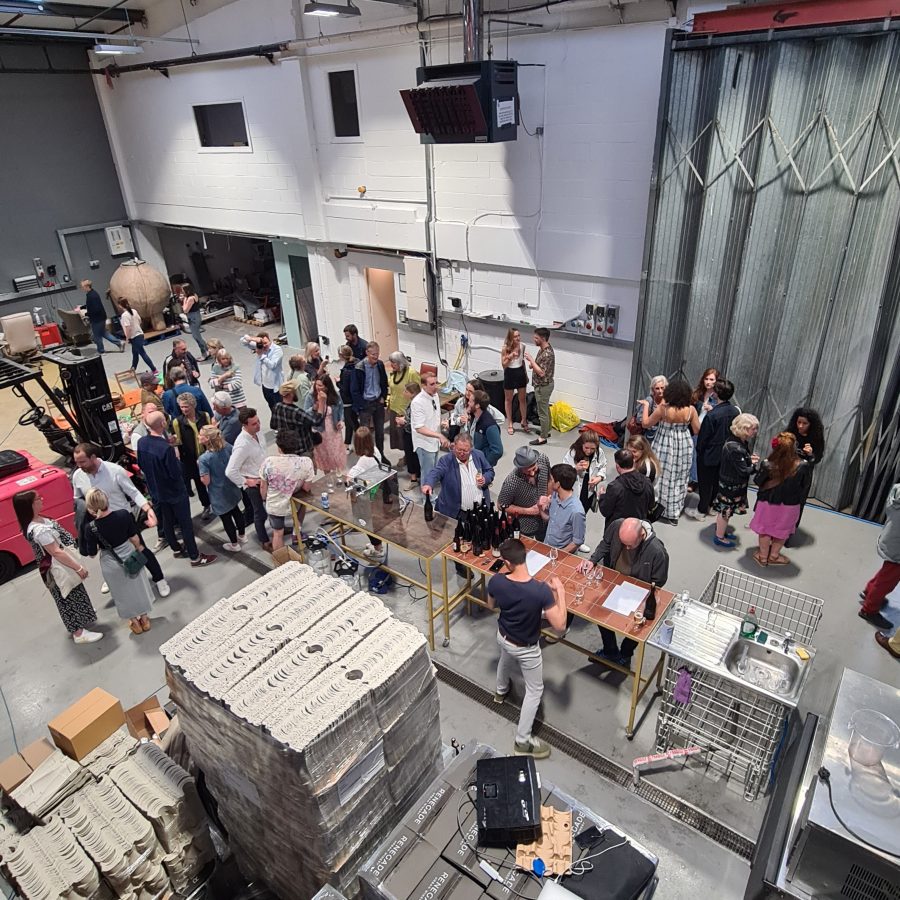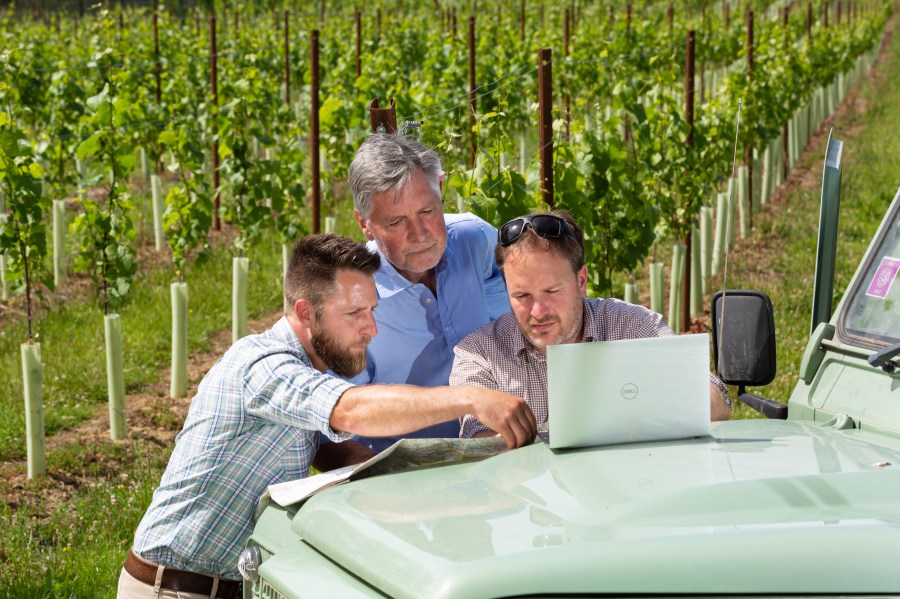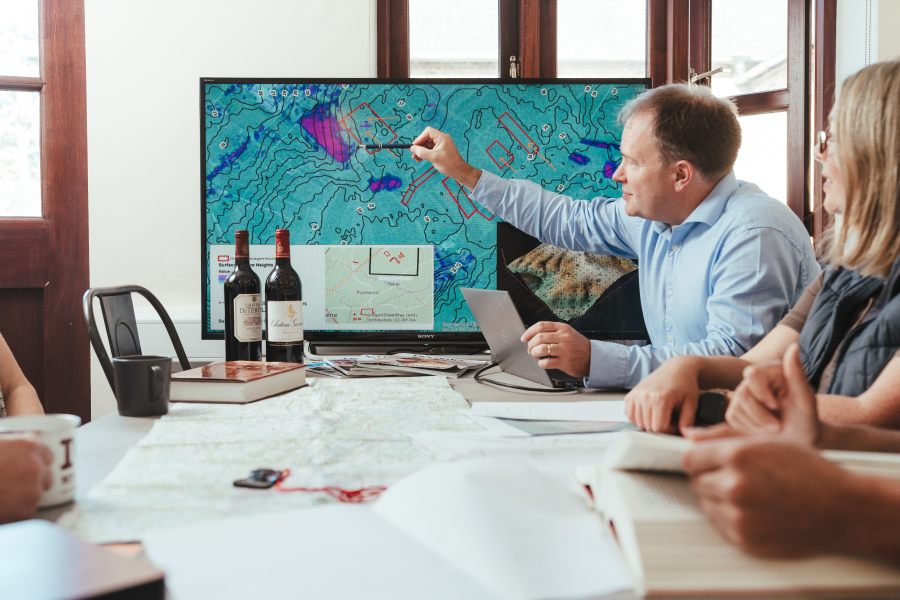Building solid foundations
At the outset, regulatory compliance is vitally important to consider. The building regulations and planning permissions required for your space are necessarily the first things to understand as they may have a significant impact on your overall vision.
Once the right regulatory framework is in place, it’s time to consider the nuts and bolts. Once again, equipment is at the heart of this, but more important are your people. The layout of your equipment goes beyond just “fitting the space” – it is a significant part of optimising the winemaking process so that you can make the best use of the people you have available. Avoiding double handling makes good sense in terms of efficiency, but also in making sure that you and your team can get through a busy harvest without burning out!
Where possible, using machinery to replace people will leave your staff able to focus their energy on areas in which their expertise is better used. Technologies like automated sorting tables represent a significant capital expenditure but may prove their worth if they free up the time of people whose experience makes a bigger impact on quality than their physical labour.
A recent paper examining the potential of digitalisation in the wine industry for the 44th World Congress of Vine and Wine has highlighted the benefits that digital technologies could have to “facilitate automation and real-time monitoring of production processes, enhancing efficiency, and reducing the risk of human errors.”
Once you have planned a layout, look at it again with a view to the future. Does your plan have the flexibility required to build future capacity? How does the scale of the winery fit with the plans for your vineyard or your access to grape wholesalers?
Sustainability in the winery
Being environmentally sustainable in the winery isn’t just a way of lowering your business’s impact on the planet. Reducing energy consumption and using renewable energy has the added benefit of lowering costs and creating a more financially stable company. For many wineries, their environmental credentials are also an important part of the ethos of the business and therefore become a non-negotiable element of the winery space.
There are a wide range of technologies that can be harnessed that can increase the sustainability of a winery, in both senses.
Solar panels
Adding solar panels to the roofs of your property’s building is nothing new. As with any capital expenditure, the most important thing is to look at the cost-benefit analysis to see when you are likely to get a return on your investment. As energy prices have increased so much, it is worth looking afresh at the figures if you haven’t done the calculations for a while.
But with some wineries also being blessed with large grounds or estates, roof-mounted panels are not the only option. The La Mare Wine Estate in Jersey has recently worked with Jerset Electricity to install four ground-mounted solar panels. This is part of a partnership that is testing which crops grow best around ground-mounted solar arrays.
At La Mare, a wildflower meadow will be planted around the panels to increase biodiversity. They will also be featuring the panels within their walking tours of the site, continuing to build on their eco-tourism offer. It is expected that the panels will generate around 2550 kWh of electricity each year. The UK Data Service suggests that the average energy use for domestic wine production is 0.557 kWh/litre.
Crossflow filtration
Using pad filtration can require multiple passes and creates a lot of waste as filters are replaced. Crossflow filtration uses a selective porous membrane to clarify wine. The membrane might be made of polymers or ceramics and can have a lifespan of over a decade.
The liquid is circulated under pressure in parallel to the membrane which stops the filtered particles from settling on it – they flow tangentially along the surface of the membrane. This keeps the quality of filtration at a consistent standard and also requires little energy to work. As the technology has evolved, it has begun to consume less water and produce less waste, as well as reducing the time required for filtration.
Insulation
Insulating a bottle store is just common sense for avoiding significant temperature fluctuations. However many of the traditional materials are not sustainable; using a lot of energy in their manufacture, are made from non-renewable materials or cannot easily be removed for reuse or recycling at the end of the building’s life.
Happily, more types of sustainable insulation are now coming to the market. They include:
- Sheep’s wool insulation – can be made from ethically raised British sheep’s wool. A mix of 75% wool with recycled fibres actually outperforms insulation with a higher wool percentage. It can also be recycled or reused at the end of its life.
- Cellulose insulation – This material is made from unmixed newspapers. As it is made from organic material, it allows for the absorption and controlled release of moisture.
- Wood fibre insulation – this is made from fresh softwood that was not suitable for structural applications or harvested from sustainable sources. As well as locking away carbon, it gives excellent insulation in the winter and heat protection in the summer.
- Recycled plastic insulation – Polyester fibres from recycled plastic bottles are being made into sustainable insulation for roof spaces. This diverts tonnes of waste plastic from landfill or incineration.
A winery making use of all of these methods is Camel Valley in Cornwall. They have always had an insulated store but built a new one in 2016 with the addition of temperature control, which they no longer use.
“We actually found it wasn’t as good for our wine to keep everything at a stable temperature,” winemaker Sam Lindo said. “We let the bottle store warm up to about nineteen degrees in the summer and cool down to about eight degrees in the winter. It requires very little energy to achieve this.”
As well as allowing the wine to age faster, so it doesn’t need to be stored as long for quality, Camel Valley has also found a number of logistical issues are solved by not using temperature control.
“When the wine was being kept at 13 or 14 degrees,” Sam explained, “if we brought it out of that environment in the summer there was a lot of condensation on the bottles. It’s very difficult to label as we had to wait for the bottles to acclimatise. So temperature control caused all sorts of problems that were kind of unnecessary.
“I realised this because I noticed that another producer’s wine had a certain quality that our wine used to have but it no longer had. They were storing it in insulated wooden sheds like us but without temperature control. I had that a-ha moment. We had tried to have too much control over things and it was worse.”
Urban wineries
Making wine within a cityscape brings new opportunities and challenges to vinification. Renegade Urban Winery make their wines in a warehouse on Black Horse Road in East London, which they were introduced to by friends at Hackney Brewery which shares the same estate.
“Pre 2021, all of our wine was made in a railway arch in Bethnal Green,” founder Warwick Smith tells me. “That was an absolute nightmare. It was 1000 square feet with no floor drains or single-phase electricity, terrible access and no forklifts. In 2021, I raised some money and we got this bigger site on Blackhorse Road. It’s about 7000 square feet in size.
“When we got it, it was a complete tip. It had been used as an illegal marijuana-growing factory. As a consequence, the landlord had ripped out every service – gas, electricity, water. We had to do the first harvest on a generator.”
Despite the problems, this blank canvas allowed Warwick to design his winery, in collaboration with his experienced winemaker, Dr Andrea Bontempo Snr III. Having learned lessons from their first winery they knew it was important to keep all interfaces with grapes and wine separate from the customer-facing operations. This meant that the front of house was permanently set up as a flexible event space. Guests can see all around the winery from the mezzanine, but they are kept separate from that space and the equipment. This addition of a hospitality element to the premises is an integral part of making the business viable where space is at a premium.
The winery was built with the intention of scaling up. The Bethnal Green site could yield 38,000 bottles, milking the space for all the value they could. While Walthamstow is seven times bigger, so far they are up to 76,000 bottles. Growth is relatively slow because they are investing in the very best quality kit they can afford with the cash flow that is available.
Renegade’s space has informed the styles of wine they have chosen to make. “Sitting on stock, ageing, maturing, bottle fermenting and being on lees are expensive ways to store wine in London,” Warwick said. “We’ve focused on making pet nats because they can be released six months after harvest. We’ve also focused on the white with skin contact and light reds. It reduces ageing time and I think they are styles of wine that younger people are more keen on these days.
“The philosophy of the winery is really to challenge the status quo and do things differently. London has no appellation guidelines. It has no real tradition of winemaking, so there are no rules.”
In this way, Warwick has drawn inspiration from the experimental craft breweries that neighbour his winery. Renegade is focused on making unique wines, trying to do different things with high-quality grapes.

Ask the expert
We got the expert view on winery design from Dr Alistair Nesbitt, Vinescapes CEO & Viticultural Climatologist and Sarah Stott, Vinescapes Winemaker & Viticulturist. Vinescapes specialises in winery scoping and has worked with many UK wineries to design and deliver their facilities.
What are the most important considerations when setting up a new winery?
Alistair: “As we can see, Great Britain’s burgeoning wine industry is developing rapidly, with increasingly more interest from well-established international wine companies. We are seeing changes in our planting styles, with new varieties being brought in, and styles of winemaking advancing. Our clients and other industry members are often making changes to adapt their wineries to produce international styles or facilitate the processing of more fruit and varieties, while continually driving to achieve high quality winemaking.”
Sarah: “One of the critical factors to consider when designing a new winery or seeking to renovate an existing winery is space. Space for winemaking vessels, separate vinification and ageing rooms, equipment and dry goods storage areas and room for harvest equipment. There also should be an option for expansion.
“We often see wineries built for a specific tonnage of fruit but within a few years, they can outgrow this space and struggle to have sufficient areas for experimental vessels such as larger format barrels, foudres or even clay amphoras, plus all their equipment and wine storage.”
Alistair: “Factoring in temperature control and energy-efficient refrigeration is also an important consideration, as is effective winery waste management. These can be critical to generating efficiency and regulatory compliance and often are not given sufficient focus in the design phase.
“In our work with architects, designers and winery owners, we ensure the technical and operational spaces are clearly defined and have the capacity to respond to changing demands on the winery and the winery team.”
What can wine producers do to help optimise their space?
Sarah: “Rental equipment and contract winemaking can be something to consider to better optimise space, rather than committing to purchasing larger pieces of equipment, such as bringing in a mobile bottling line service and contracting out tirage at contract facilities.
“Another consideration is maximising your own facility, by adding in mezzanine levels for storage or adding weather-resistant options for outdoor processing.”
Alistair: “We are seeing an increase of our Plumpton alumni travelling overseas to experience winemaking in well-established domaines around the world. They bring back new styles and techniques they are keen to try out back home, so the winery they come back to work in has to offer flexibility.
“In the UK, we also see considerable vintage variation – no two seasons are the same – and our winemaking styles are changing because of the weather we are experiencing. To adapt, winemakers need to develop techniques in the winery, by looking at alternative vessel usage, such as different sizes of oak barrel or concrete tanks and they may experiment with yeast strains, or even spontaneous fermentations.”
How can wineries design their facilities for efficiency?
Alistair: “Just as we work with our clients to manage their vineyards in an environmentally sustainable way, we also work with wineries to develop winemaking facilities and cellar doors using sustainable and environmentally friendly methods. Carbon neutral wineries are the gold standard in environmental sustainability; we are working on developing our efforts in designing wineries to be carbon neutral.
“We also focus on financial sustainability – we scope out and design wineries to fit within a strict budget and to minimise ongoing operating costs, with energy being one of the most cost prohibitive elements of wine production. We will factor into the design and build options for our clients’ possible renewable energy sources and how we can use the natural assets or topography to create both a highly attractive facility but also a winery designed to maximise efficiencies to create the best possible wine products for the business.”
Sarah: “We’re very attuned to how the winery represents the wine brand. If you’ve visited some of the most popular wine regions in the world such as Champagne, Rioja or the Napa Valley, winery and hospitality buildings can be some of the most iconic architectural attractions in the area.
“With the right design, a winery building can be a powerful brand symbol and provide attractive tasting room areas and commercial hospitality spaces to generate vital income for the business.”

Joel Jorgensen, Jonathan Rodwell and Dr Alistair Nesbitt
For more like this, sign up for the FREE Vineyard newsletter here and receive all the latest viticulture news, reviews and insight




